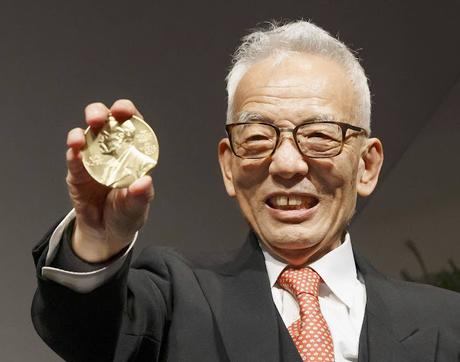Wilhelm Conrad Röntgen - the name may strike a chord !- was a German mechanical engineer and physicist, who, on 8 November 1895, produced and detected electromagnetic radiation in a wavelength range known as X-rays or Röntgen rays.
This year’s Nobel prize in Physics has been split between Syukuro Manabe, Klaus Hasselmann and Giorgio Parisi. While Parisi is a theoretical physicist, the other two are climate modellers whose work laid the foundations of our understanding of how carbon dioxide would shape the climate.
The Nobel Prize in Physics is a yearly award given by the Royal Swedish Academy of Sciences for those who have made the most outstanding contributions for mankind in the field of physics. It is one of the five Nobel Prizes established by the will of Alfred Nobel in 1895 and awarded since 1901, the others being the Nobel Prize in Chemistry, Nobel Prize in Literature, Nobel Peace Prize, and Nobel Prize in Physiology or Medicine. Physics is traditionally the first award presented in the Nobel Prize ceremony.All along, it has been presented in Stockholm at a regal ceremony on 10th December – the anniversary of Alfred Nobel’s death. So far 219 individuals have been awarded this coveted prize.
This year the award was timely,as the most recent IPCC report, based on state-of-the-art climate models, states unequivocally that humans are already influencing many weather and climate extremes in every region across the globe.A climate model is a computer program designed to simulate Earth’s climate in order to understand and predict its behavior. Climate models are largely based on a set of mathematical equations that describe the physical laws which govern the behavior of the atmosphere and ocean, and their interactions with other parts of Earth’s climate system such as land surface or ice sheets.
The physical modeling of Earth's climate, for which Syukuro Manabe, senior meteorologist at Princeton University, was chosen as a recipient of the 2021 Nobel Prize in physics is a technology to simulate physical phenomena of the Earth on a computer. Aiming to create a "digital twin" of the real world, it is an indispensable tool for discussing plans for humanity's future, such as predictions on global warming and the effects of measures against it.Meteorological modeling has developed from a simple primary model of reproducing behaviors of atmospheric columns from the ground to the sky, to a general circulation model calculating three-dimensional atmospheric circulation, to a coupled ocean-atmosphere model combining the general circulation model with one for the ocean. Manabe has been involved in all of these as a pioneer.

Dr. Manabe received this year's Nobel Prize in Physics "for the physical modelling of Earth's climate, quantifying variability and reliably predicting global warming." Global environmental issues have become a major challenge for society, highlighting the importance of his pioneering work on developing climate models.
Japan-born American Nobel laureate Syukuro Manabe on Monday expressed hope that more young people will study climate change after receiving the medal in physics for laying the foundations for reliably predicting global warming.Manabe was one of a number of Nobel laureates who, like last year, are receiving their medals in their country of residence instead of in Stockholm due to pandemic-related travel restrictions."The medal was heavier than I thought," the 90-year-old senior meteorologist at Princeton University told reporters following the ceremony for U.S.-based laureates at the National Academy of Sciences in the U.S. capital. "I'm very happy.""Studying climate is fun," he added. "I want more young Japanese people to join."
Manabe and Klaus Hasselmann, 90, of Germany, shared half of this year's 10 million kronor ($1.1 million) Nobel physics prize, while the remaining half went to Italian Giorgio Parisi, 73.The laureates were recognized for their "groundbreaking contributions" to the understanding of complex physical systems, such as the Earth's climate, according to the Royal Swedish Academy of Sciences, the prize awarder.
Born in Ehime Prefecture, Manabe moved to the United States in 1958 to work at the U.S. Weather Bureau, now called the National Oceanic and Atmospheric Administration.He became a naturalized U.S. citizen in 1975 and currently resides in New Jersey.The first Nobel Prize in Physics was awarded in 1901 to Wilhelm Conrad Röntgen, of Germany,John Bardeen is the only laureate to win the prize twice—in 1956 and 1972.
With regards – S. Sampathkumar7th Dec 2021.

